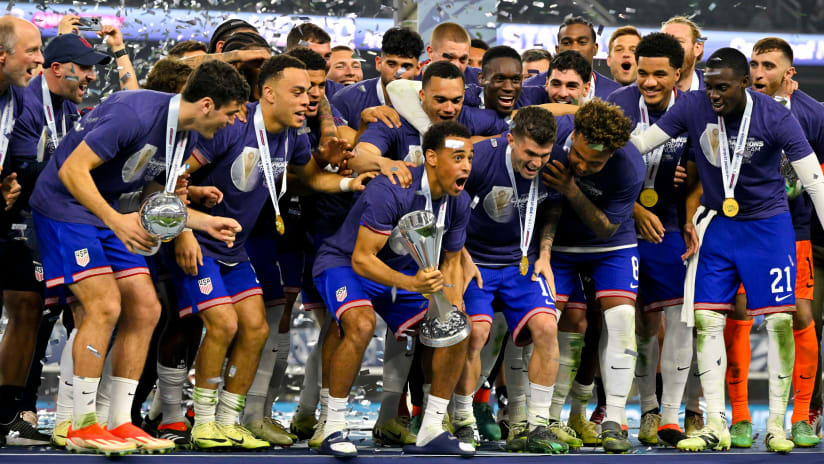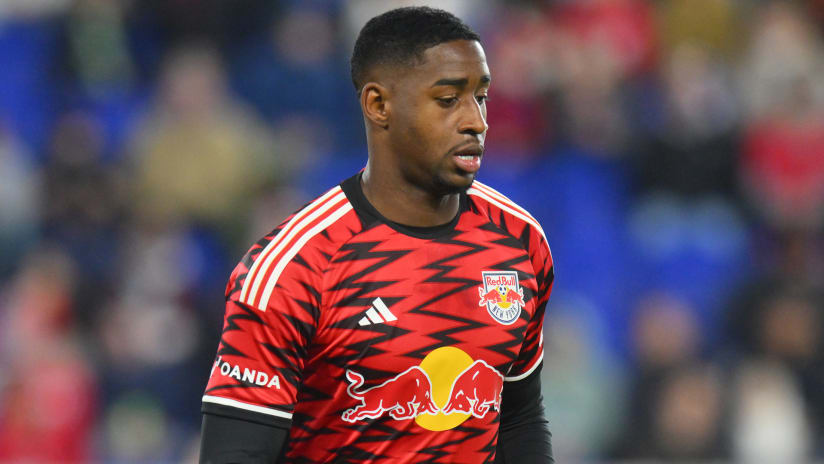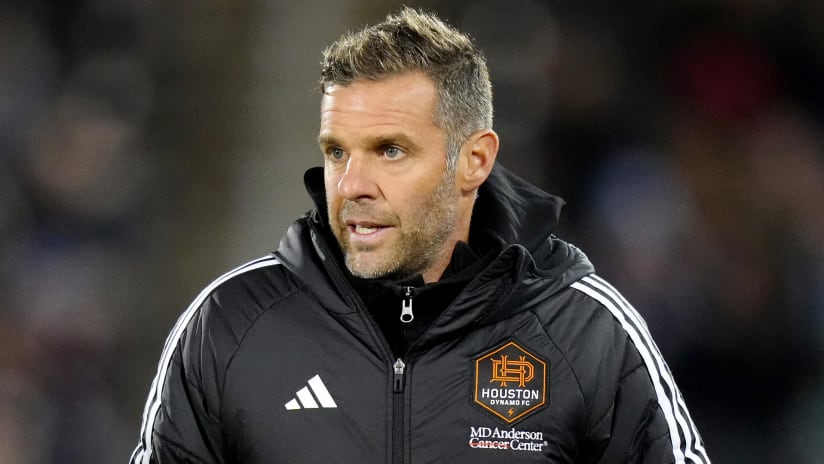High expectations. Players raised and developed outside of the US soccer system. Questions about chemistry.
Sound familiar?
We’re not talking about the US national team that is preparing to go to the 2014 World Cup in Brazil, though. This is a list of some of the issues faced by the American team that headed to France in 1998.
Among most American soccer fans and observers, the 1998 World Cup is widely considered the US program's nadir on the international stage in the modern, post-Caligiuri, era. Coached by Steve Sampson, who was only 41 years old at the time, the Yanks lost all three group-stage matches, scored only one goal, and slouched home to be remembered mainly for internal squabbles, finger-pointing, and the John Harkes controversy.

But today, Sampson (
pictured, with Thomas Dooley
) says the team was doomed before they even got to France.
“I think there were raised expectations, because of the results in the Copa América [in 1995] and in qualifying and beating Brazil in the Gold Cup,” he told me this week. “Unrealistically, everyone expected we would reach the second round.”
- FOLLOW LIVE: USA vs. Mexico, 11 pm ET, MLSsoccer.com
Hopes for this year’s US team are similarly high, at least in the broader sports media and among fans. It’s understandable, considering the buzz around the team during the last World Cup and the dominating performance during qualifying. At least after Brian Straus’s now-infamous Sporting News article about discontent in the ranks ahead of a World Cup qualifier last March lit a fire under the players.
At the same time, the United States are in the Group of Death, squaring off against two world powers in Germany and Portugal as well as their formidable nemeses from Ghana. Sampson believes head coach Jurgen Klinsmann is doing a good job of playing down expectations so as not to affect the squad’s chances.
Even in 1998, Sampson says, the players were “very realistic. They felt they deserved respect to at least compete with the best, but they didn’t buy into the hype.”
But the team was still naïve, he says. After losing to Germany in their group-stage opener, they faced a must-win politically charged match against Iran. Sampson says officials from FIFA asked the teams to depoliticize the game as much as possible. Before kickoff, the players exchanged flower bouquets as a symbol of their mutual respect.
But respect was beside the point once the match — which is the subject of a new TV documentary titled Rise as One: Breaking Barriers — kicked off. The US needed three points. Instead, they hit the woodwork four times and gave up a goal just before halftime.
“We wanted three points so badly, we played naively,” Sampson recalled. “We opened up our lines too early. We wanted to score so badly, and opened ourselves up to the counterattack, which is how they scored both goals.”
The goal, scored by Hamid Estili, gave the Iranians momentum heading into the break. As did, Sampson says, a locker-room visit from some Iranian officials.
“I learned later [from one of Iran’s assistant coaches] that they used politics to motivate their team,” he explained. “At halftime, someone from their government came to their locker room. They took the players’ passports and told them they wouldn’t be allowed to return to Iran if they lost.”
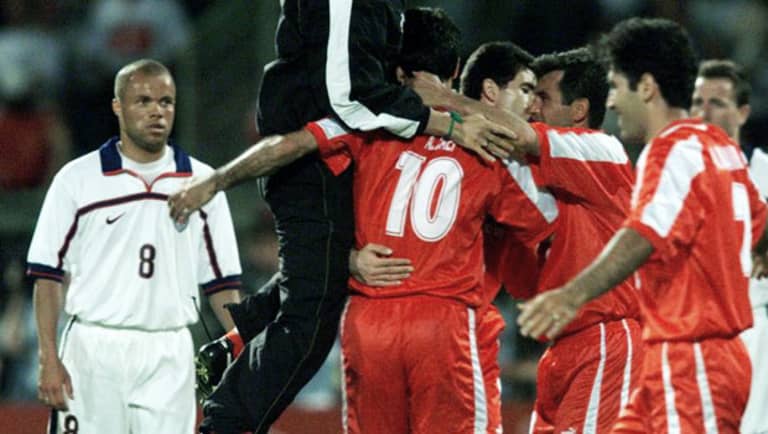
But ultimately, it wasn’t politics or expectations that undid the US team in 1998. Even Sampson admits that. It was a combination of all the different factors, and it offers some valuable lessons that still ring pretty true.
“I learned that it’s hard to be a young national team coach,” Sampson said. “I didn’t have enough life experience to draw from on the international stage. I didn’t have the opportunity to cut my teeth for many years and get professional experience. That affected my ability to be prepared for 1998."
Perhaps more life experience would’ve helped him head off another issue for the 1998 squad: foreign-born players. Calling up foreign-born and naturalized players has been a common practice over the years for US national team coaches, from Thomas Dooley and Earnie Stewart in the ’90s to Jermaine Jones in 2010 to Bayern Munich teenager Julian Green today.
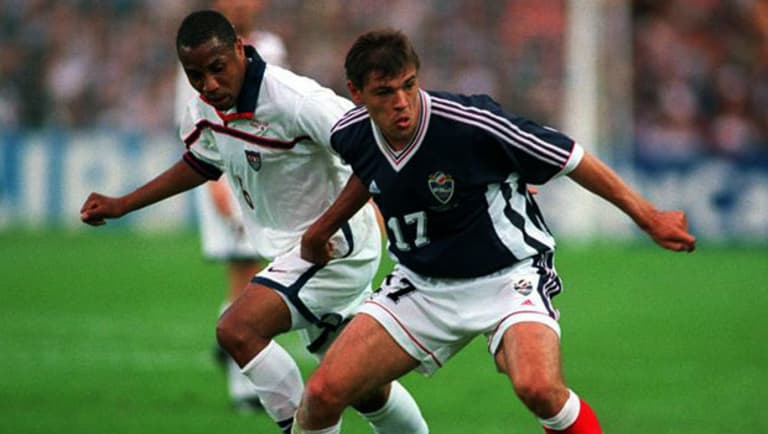
In 1998, the most talked-about player was David Regis (pictured, right), who had developed in France and was playing in the Bundesliga in 1998. He was eligible for US citizenship through his marriage to an American woman.
Regis made his US debut on May 23, 1998, just weeks before the start of the World Cup. Sampson says he had tried for two years to get Regis into the fold, but paperwork held it up until the last minute.
“I made a mistake allowing Regis to join so late in the game,” Sampson said. “It affected our chemistry. I probably should’ve left him off the squad and let Jeff Agoos play left back. But he was a good player, playing the Bundesliga. It was very attractive.
“But hindsight is 20/20 vision. The stability and chemistry should’ve been more important than one player.”
Sampson, who later coached the LA Galaxy to the 2005 MLS Cup/US Open Cup double and today works as a TV broadcaster in Southern California, returns again and again to the theme of chemistry. It’s the key to success, he suggests, regardless of all the other strides the US team is making on the field.
“We are a lot less naïve. We’re getting smarter tactically. We’re getting better technically,” he said. “We have achieved in a short time more than any other nation. But we’re not satisfied.
“You can’t understate the importance of chemistry and how important it is for Jurgen Klinsmann to build on the chemistry.”



